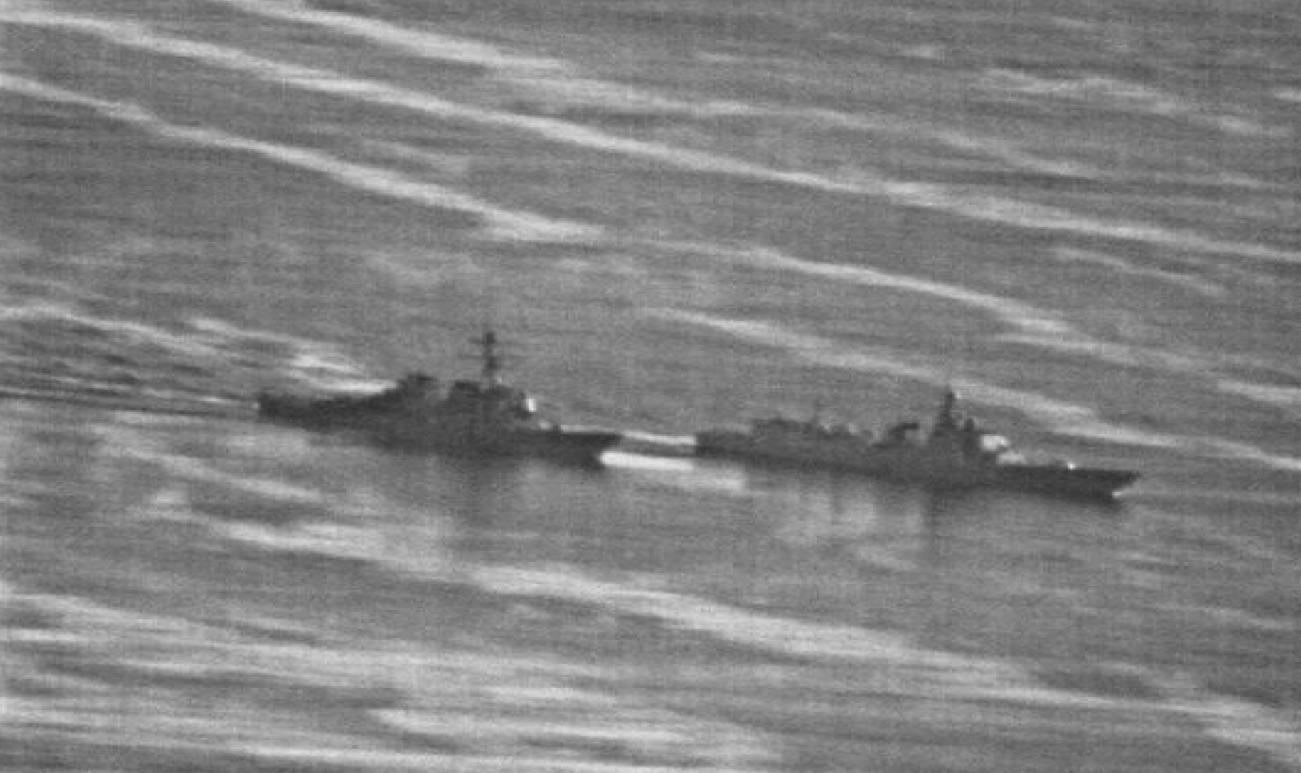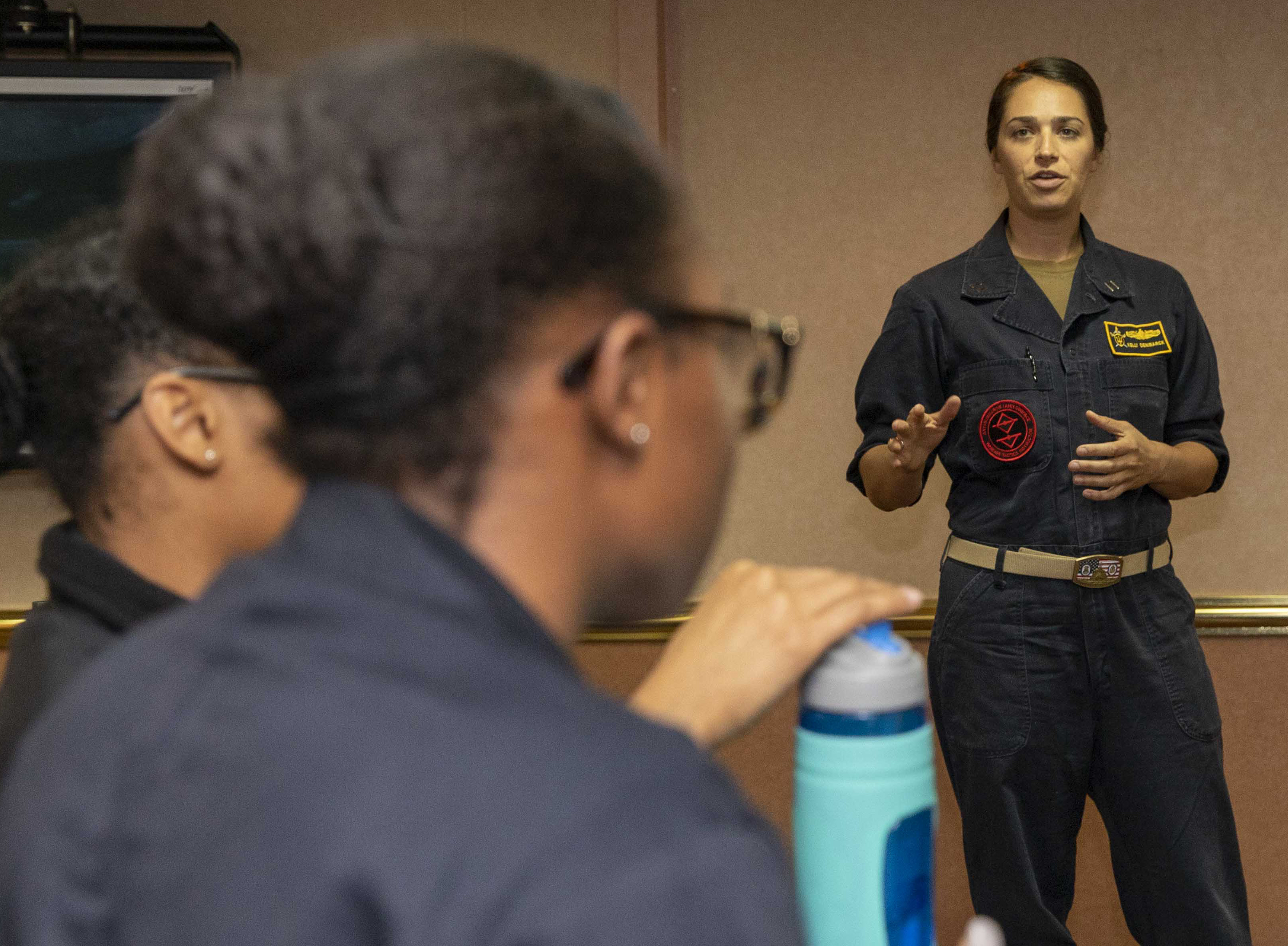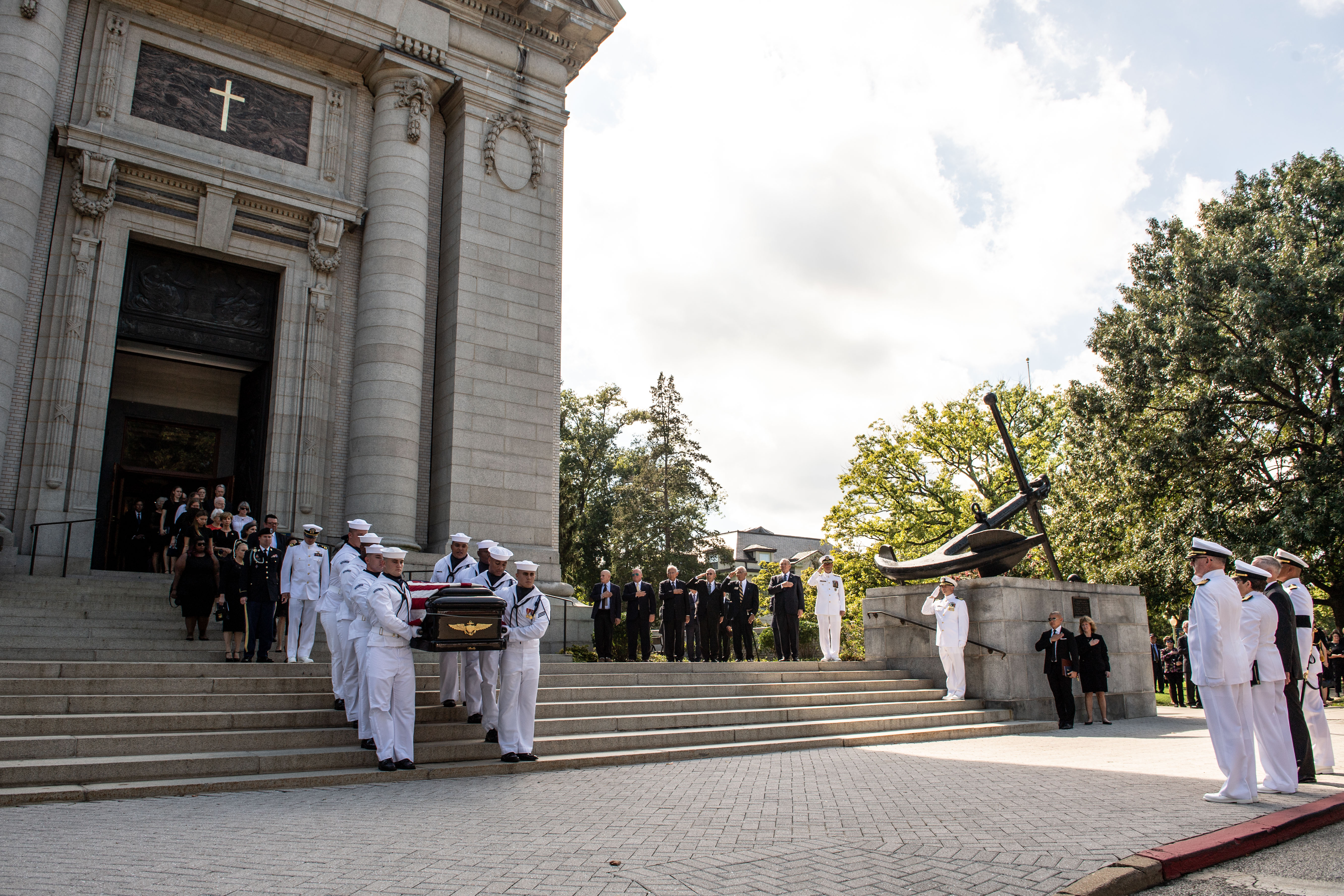
USNI News polled its writers, naval analysts and service members on what they consider the most important military and maritime stories in 2018. This story is part of a series; please also see U.S. Coast Guard and U.S. Marine Corps Operations.
If 2018 made anything clear, it’s that the U.S. Navy noticed the increased Russian submarine activity in the Atlantic and won’t let it go unaddressed.
Much of the U.S. Navy’s major activities this year were focused on the Atlantic Ocean, on NATO allies and partners, and on boosting training and capabilities for great power competition.
This focus on Atlantic operations to push back against Russia was exemplified in the standup of U.S. 2nd Fleet. This Cold War-era command was disestablished in 2011, during a relatively good period of U.S./Russian relations and just ahead of the Obama Administration’s Pivot to the Pacific. Now, though, it’s clear the relationship has gone cold again, and much of the Navy is focused on the Northern Atlantic, the Arctic Circle and other waters not regularly patrolled since the 1990s.

The Harry S. Truman Carrier Strike Group was the first to venture north of the Arctic Circle in nearly three decades, and it also spent more time in the Greenland-Iceland-United Kingdom (GIUK) Gap than any recent CSG has. USS Harry S. Truman (CVN-75) and its escorts visited Iceland, U.K. and Norway and patrolled the North Sea and Norwegian Sea in the first “Dynamic Force Employment” deployment meant to keep adversaries on their heels by shaking up when and where strike groups deploy.
Part of Truman’s High North operations was the NATO exercise Trident Juncture 2018, which simulated a Russian invasion of Norwegian sovereign territory and the NATO Article 5 response that would follow.
Though much has been made of Russia’s increasing submarine threat in the region, 2018 also showed Russia’s willingness to challenge international law on maritime and territorial claims through their aggression against Ukraine in the Sea of Azov. Though the U.S. Navy cannot patrol the Sea of Azov, it has kept up its routine destroyer and aircraft patrols of the Black Sea – leading to a handful of times when Russian fighters attempted to intercept or buzz American planes.
Less talked about in 2018 was the Pacific or the Middle East.

China continued its aggression in the South China Sea, nearly causing a collision with destroyer USS Decatur (DDG-73) and confronting Royal Navy amphibious ship HMS Albion (L14). It also continued a push to install weapons and sensors onto artificial islands in the South China Sea, leading the Navy to disinvite China from the Rim of the Pacific 2018 international exercise.
Though the Pentagon said it would conduct more freedom of navigation operations (FONOPS) to push back against aggression and excessive maritime claims – including one this year aimed at Russia in Peter the Great Bay – military leaders also sought to downplay the FONOPS as routine and not worth drawing attention to.
On multiple occasions, the U.S. Navy sent a pair of ships through the Taiwan Strait. The Navy also sent USS Mustin (DDG-89) to sail near Mischief Reef, and USS Antietam (CG-54) and USS Higgins (DDG-76) sailed near the Paracel Island chain.
In the Middle East, the Navy operated the Theodore Roosevelt Carrier Strike Group in the Persian Gulf for the first three months of the year, but the CSG chopped out in late March and another carrier did not arrive until last week.

Despite the lack of carriers in the Gulf, the Navy still played a major role in the April 13 missile attack on Syrian targets related to researching, storing and employing chemical weapons. Ticonderoga-class guided-missile cruiser USS Monterey (CG-61) and Arleigh Burke-class destroyer USS Laboon (DDG-58) launched a combined 37 Tomahawk missiles from the Red Sea, while USS Higgins (DDG-76) fired 23 Tomahawks from the Persian Gulf and Virginia-class attack submarine USS John Warner (SSN-785) launched six Tomahawks from the Eastern Mediterranean. Joining the attack were U.S. Air Force and U.S. Marine Corps aircraft, as well as aircraft and ships from France and the U.K. The strike was the first time a Virginia-class sub had fired a shot “in anger,” or at an enemy target rather than a training target.
Readiness Recovery

Another major theme of 2018 was rebuilding readiness in the surface navy, after 2017’s pair of collisions in U.S. 7th Fleet that killed 17 sailors and highlighted major training, maintenance and personnel management shortfalls.
The Senate Armed Services Committee drafted a list of surface navy reforms that were ultimately included in the Fiscal Year 2019 National Defense Authorization Act. Among the changes implemented were a requirement for surface warfare officers (SWOs) to use logbooks to record their time at sea, much like aviators do to ensure training across all times, weather, types of maneuvers and other factors. The Navy began issuing logbooks and requiring their use in September.
A study this year showed junior SWOs had major gaps in knowledge about basic ship handling and navigation, which led the surface force community to look at changing the SWO career path to include more at-sea time to build proficiency. The fleet continued to implement its own recommendations and those in the FY 2019 NDAA, requesting funds for schoolhouses, training tools and other reforms.

The Naval Surface and Mine Warfighting Development Center was active in 2018, pushing the Navy towards preparedness for higher-end warfare. SMWDC conducted the first surface warfare advanced tactical training (SWATT) exercise on the East Coast with the Kearsarge Amphibious Ready Group, bringing the high-end training to the Atlantic fleet for the first time, as well as the first SWATT on the East Coast for carrier strike group escorts. Additionally, the Navy looked for time at sea to conduct other high-end training, such as leveraging the Theodore Roosevelt Carrier Strike Group’s transit from San Diego to Hawaii as an opportunity to conduct a “Fleet Problems” open-ended live exercise against U.S. submarines and aircraft playing the red force.
Despite the gains made in some readiness areas, ship and aircraft readiness continued to be a challenge. Outgoing Defense Secretary James Mattis set an aggressive goal for the military to achieve an 80-percent mission-capable rate for fighters by the end of Fiscal Year 2019, and while the Navy began to look at what it would take to modernize its depots and its maintenance practices, carrier deployments were at a 25-year low as the force reset. Ship readiness challenges were also on display during RIMPAC 2018, when two amphibious assault ships – one in the main Hawaii exercise and one in the California portion – suffered engineering casualties and had to back out of the exercise. And the entire Littoral Combat Ship fleet remained at home in 2018 despite a plan for four ships to deploy to hubs in Singapore and Bahrain.
The readiness challenges throughout the fleet may have contributed to several fatal mishaps this year, including an ensign who was killed during small boat operations in the Red Sea, a young airman apprentice who was killed aboard USS George H.W. Bush (CVN-77) when he was struck by the propeller of an E-2C Hawkeye, and two aviators who died in an F/A-18F crash off Key West after their jet was flying on a single engine.
Leadership

The Navy’s top enlisted sailor stepped down in June in the midst of a workplace misconduct investigation. After the Navy first announced that Master Chief Petty Officer of the Navy Steven Giordano would be taking leave during the investigation, Giordano announced later that day he would retire. Russell Smith, a fleet master chief who was serving as the senior enlisted advisor on manpower, personnel, training, and education issues, was named temporary MCPON; two months later he was given the job permanently.
Around the globe, Adm. Phil Davidson became the new U.S. Indo-Pacific Fleet Command commander, Adm. John Aquilino became the new U.S. Pacific Fleet commander, and Vice Adm. Scott Stearney relieved Aquilino as the U.S. 5th Fleet commander. Stearney died Dec. 1 in an apparent suicide, and Vice Adm. James Malloy was quickly confirmed as the new 5th Fleet commander.

The Navy also mourned the loss of naval aviator legends and influential lawmakers President George H.W. Bush and Sen. John McCain, who both had lasting impacts on the Navy and are both honored as namesakes of current commissioned warships – with McCain officially being added as a namesake this year alongside his father and his grandfather, who are honored by the USS John McCain (DDG-56).
Chief of Naval Operations Adm. John Richardson kicked off the year with the introduction of his six-pronged approach for creating a “whole” naval fleet, and he ended the year by releasing an updated Design for Maintaining Maritime Superiority 2.0 that outlines a plan to achieve that whole fleet.





